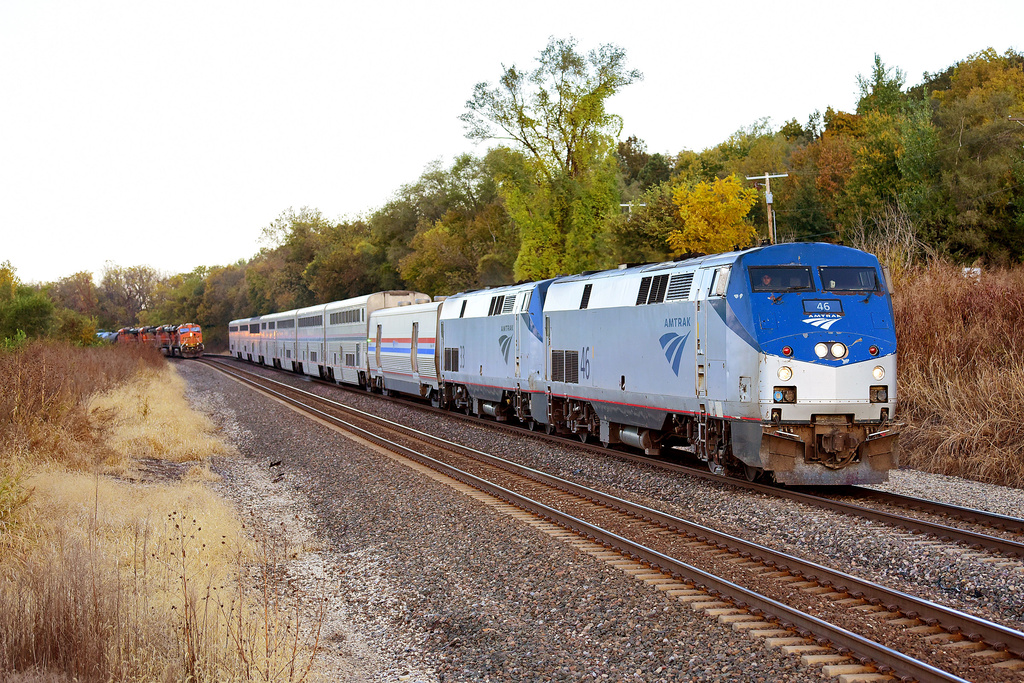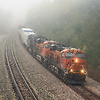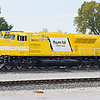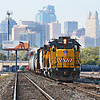| ArtManDoo, Jayasankar Madhavadas, Giorgio Iannelli, Artemios Klonos and 3 other liked this |
Why in the United States do not connect these locomotives tails? How's that? https://www.flickr.com/photos/world_railways/7196264704/
@tzhs Good question! When these (and other) units were new, that was the normal procedure - back-to-back, so they would not have to turn them for the run in the opposite direction. But, as they aged and became more unreliable, it seemed to make sense to have them both facing forward so that the second unit could be switched to lead, if necessary. That's my theory, anyway  In this case, I actually heard (on my scanner radio) the engineer talking to the conductor in the train if he could get to the second unit to reset some control because it wasn't loading and thus it was taking the lead unit too long to make speed after a stop. If the second unit was facing backward, there would have been no way for the conductor to get into it.
In this case, I actually heard (on my scanner radio) the engineer talking to the conductor in the train if he could get to the second unit to reset some control because it wasn't loading and thus it was taking the lead unit too long to make speed after a stop. If the second unit was facing backward, there would have been no way for the conductor to get into it.
 In this case, I actually heard (on my scanner radio) the engineer talking to the conductor in the train if he could get to the second unit to reset some control because it wasn't loading and thus it was taking the lead unit too long to make speed after a stop. If the second unit was facing backward, there would have been no way for the conductor to get into it.
In this case, I actually heard (on my scanner radio) the engineer talking to the conductor in the train if he could get to the second unit to reset some control because it wasn't loading and thus it was taking the lead unit too long to make speed after a stop. If the second unit was facing backward, there would have been no way for the conductor to get into it.
The Soviet locomotives (2TE10*, 2TE116* and others) transition between sections in the route in their tails. http://www.train-photo.ru/data/media/211/IMG_0352.jpg
If the train is light, passenger, the crew turns off the front section of the locomotive and rides in pleasant silence. It happens all the time... https://www.trainpix.org/photo/00/41/44/41442.jpg
@tzhs US crews have much less latitude to make such changes in loco operation since most units have GPS and PTC communications with dispatch and mechanical departments.
Please log in to your account or sign up to like this picture or leave a comment












 Oct 28, 2019
Oct 28, 2019